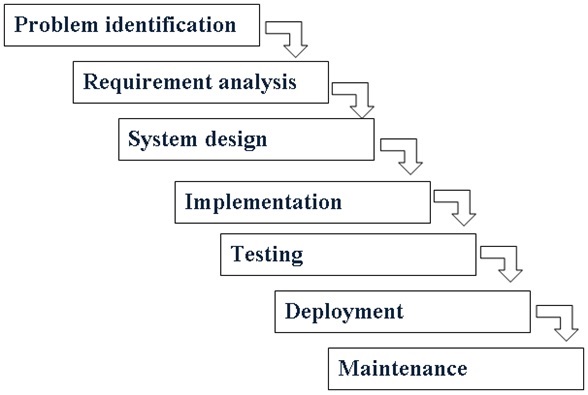Home »
Management Information System
SDLC Waterfall Model in Management Information System
MIS | SDLC Waterfall Model: In this tutorial, we will learn about the SDLC Waterfall Model, its phases, advantages, and disadvantages in Management Information System.
By IncludeHelp Last updated : June 01, 2023
Waterfall Model
The waterfall is an SDLC model, in which the development process looks like the flow of water. All the development phases are move step by step.
The waterfall model includes the gradual execution of every stage completely. This process is strictly documented and predefined with features expected to every phase of this system development life cycle model.
The waterfall model fully encompasses with gradual execution of each stage. The Waterfall model is a predefined model with features required for each step of this model of life cycle system development.
The waterfall model is the simplest. The system development starts with the Problem Identification and ends with system maintenance phase. All the Phases and their sequence are described in the following figure.

Waterfall Model
Phases of Waterfall Model
Problem identification This is the first and initial phase of the waterfall model. This phase is used to identify the problem.
Requirement analysis In this phase, the experts gather requirement and thinks about the solution of a problem.
System design - System design is a blueprint of the solution. The process follows the steps i.e. first creates logical design and physical design.
Implementation - Implementation shows the final integration of the system.
Testing - Testing is a process to validate the objective of the system through various steps. It is a mechanism that makes sure that the system is working properly or not.
Deployment - After successful testing of the developed system, it is deployed to the concern candidate or company for which it has designed.
Maintenance - After a successful deployment of the system at clients' end, it is compulsory to maintain it from time to time, so that system can successfully run to a long period.
The waterfall model is the most suitable model when the requirements are crystal clear and don't change frequently. The waterfall model explores a logical progression of development phases during the development of a system. In line with this, the waterfall model describes the process of system development in a linear sequential manner; it means that every phase in the cycle of development only starts when the previous phase is complete.
Followings are the advantages and disadvantages of the waterfall model,
Advantages
- It is the simplest model
- Easy to use and understand
- Each step has a specified result and process analysis
- Phases of development go step by step
- Waterfall model is ideal to small or medium-sized projects where requirements have certainty and not uncertain
- Easy to recognize key points in the development cycle
Disadvantages
- The framework is ready only after the final stage is over
- High Risks and Uncertainty
- Not the best option for complex and object-oriented projects
- Inappropriate for long-term projects
- The progress of the stage is difficult to identify when it is still under development
- Integration is achieved at the end
Advertisement
Advertisement